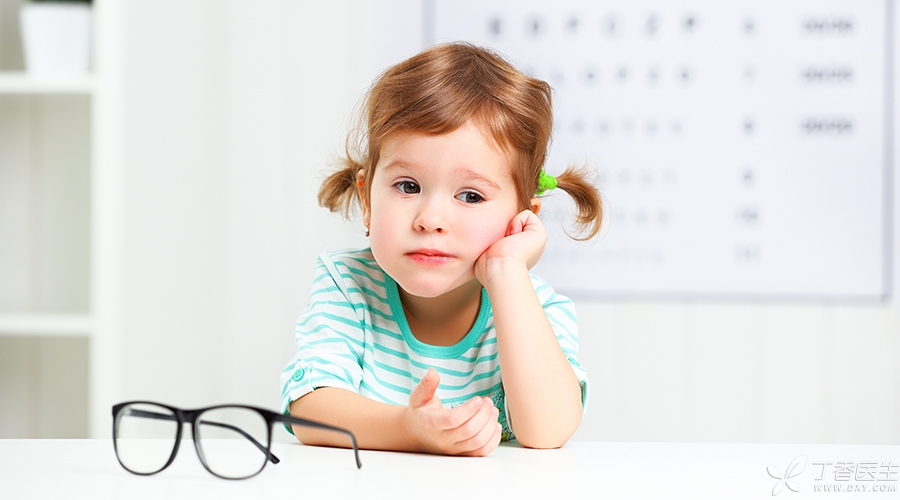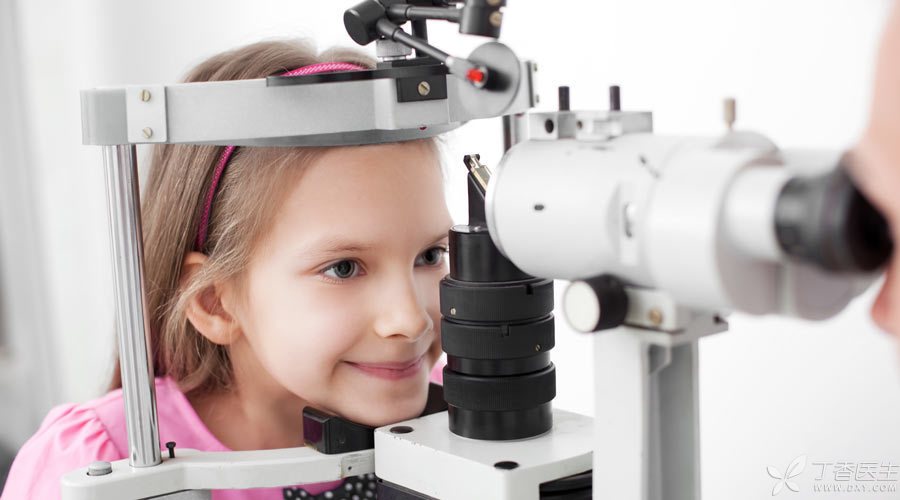
Eyes are the windows of the heart. Many parents have made a lot of efforts to protect this window.
Parents all hope that their children will have a pair of bright eyes in the future, unlike themselves, who will become [big four eyes]. How old can they start to prevent myopia? How can we protect our children’s eyesight? Dr. Clove invited Dr. Xu Ye today to talk about this topic.
Is myopia terrible?
In recent years, myopia has become very popular all over the world. In Europe and North America, 50% of young people suffer from myopia, while in China, 90% of teenagers and young people suffer from myopia. It is estimated that the global myopia population will reach 2.5 billion by 2020.
In 2012, the National Visual Health Report released by the China Health Development Research Center of Peking University said: In 2012, among the total population over 5 years old in China, the number of myopia and hyperopia patients was about 500 million, of which the total number of myopia patients was about 450 million, the total population suffering from high myopia was as high as 30 million, and the prevalence rate of juvenile myopia ranked first in the world.
It can be seen that China is a [big country with myopia]. Without effective intervention, it is estimated that by 2020, the population of myopia over 5 years old in China will reach 700 million.
How to prevent myopia?

Every parent hopes that their children have normal eyesight. How can they avoid myopia as much as possible or postpone the age of myopia?
Some studies show that in Sydney, the prevalence rate of myopia among 6-year-old Chinese children is 3.23%, while in Singapore, the prevalence rate of myopia among 6-year-old Chinese children is 29.14%.
Why? It is mainly that children in Sydney spend significantly more outdoor activities per week than children in Singapore.
What is the difference between outdoor and indoor?
One is the intensity of light, spectrum, etc., and the other is that most objects in the outdoor environment are far away, which will have a protective effect on eyes. Therefore, ensuring sufficient outdoor activity time can effectively reduce the occurrence of myopia. It is recommended that more than 14 hours a week, that is, an average of 2 hours a day. Only need to stay outdoors, even if it is just sitting in the sun.
Unfortunately, it is not easy for primary and secondary school students in our country. The survey shows that the average 15-year-old in Shanghai spends 14 hours of homework per week. In Britain, it is 5 hours, and in the United States, it is 6 hours. The increase of homework time inevitably compresses outdoor activities. As intermittent exposure to the outside is still effective, children can choose feasible ways according to their own conditions, such as increasing extracurricular activities, staying outdoors with courseware rest, walking to and from school, increasing outdoor sports, etc.
Lack of outdoor activities is the most important risk factor for myopia, and there may also be some relationship between long-term close eye use. For teenagers, what should we pay attention to when using eyes indoors for a long time? It is suggested to follow the method of looking far away for a while every half hour, keep a proper distance when reading, and use comfortable lighting, all of which are helpful to reduce asthenopia.
Does what need to go to a professional hospital for examination?
When children squint, squint, tilt their heads and lean forward unconsciously when watching TV in the distance, they will suspect that there is a problem with their eyesight and need to go to a professional hospital or institution to check the refractive state of their eyes.
Even if there is no abnormal manifestation, children can undergo a refractive examination after the age of 3 to understand their refractive development status.
The refractive state of the eye is not as clear as height and weight. Only through ciliary muscle paralysis optometry can the accurate refractive power be determined. Generally speaking, with the growth of age, the refractive state of the eye develops from hyperopia to myopia. Each age has a relatively normal refractive power range, which may require refractive correction beyond this range.
If it is a child susceptible to myopia or a child who already has ametropia, it needs to be reviewed regularly every six months.
A mother because she is myopic, Ever since her child was very young, Worried that children will also become myopic, Through various channels to learn the knowledge of myopia prevention and control, the computer tablet all electronic intelligent equipment as a scourge, take children to the outdoors every day, just live a rural life in the city. Little imagine her child at the age of 6 still have more than 400 degrees of farsightedness, is not a susceptible group of myopia, there is no need to be so nervous.
I’ve met a lot of parents, Every time I come to the hospital, Just be anxious, Worried about going to the hospital to check the child’s myopia has deepened again, so they deceive themselves and others and think that the child is fine without saying that he cannot see clearly. This is not desirable. Some children are worried that their parents blame or restrict the use of eyes. Even if they have found that their eyesight has declined, they dare not tell their parents that such long-term blurred vision is more likely to cause the deepening of myopia.
Teenagers are the key group of myopia prevention and treatment, Because adolescents are at the stage of growth and development, Growing in height, Myopia may also progress. Generally speaking, the growth rate of juvenile myopia slows down after the age of 12-14 and stabilizes around the age of 18-22. Therefore, before the age of 12-14, myopic children need to be examined every six months, and after the age of 14, they can be examined once a year, and when they reach adulthood, they can be examined once a few years. Of course, it is best to examine high myopia every year to find eye changes in time.
Already myopic, can the doctor help you what?

Once myopia is determined, it cannot be reversed by drugs or other methods, but can only correct and delay progress.
As mentioned earlier, simple myopia is not a [disease], and doctors do not aim at curing the disease. The help doctors can provide is to regularly monitor the degree and progress of myopia and provide appropriate control measures when needed to avoid progression to high or even ultra-high myopia.
1. Wear frame glasses to obtain clear vision.
At present, the most effective and safe way to correct myopia is to wear glasses. Some parents will reject glasses, It is believed that myopia will become deeper and deeper after wearing glasses, This is a very common misconception. In fact, wearing a mirror can not only obtain clear far vision, But also to reduce asthenopia, improve eye position and binocular vision function has a positive effect. On the contrary, myopia does not wear glasses, so that children are in blurred vision for a long time, but it is more likely to lead to deepening myopia. Therefore, it is the best measure to determine that after myopia should wear glasses of appropriate degree, and replace glasses in time according to the deepening of myopia.
2. Low concentration atropine eye drops
Atropine is a non-selective cholinergic M-type receptor antagonist, Possibly by acting on the retina and sclera, So as to delay the growth of eyeball. Studies have confirmed that atropine eye drops have a significant effect on delaying the progression of myopia. But at the same time there may be photophobia, Vision near blur, Allergy, rebound after drug withdrawal and other side effects. Choose the appropriate concentration of drugs, generally low concentration atropine, while maintaining relatively good myopia control effect, reduce adverse reactions, which can be used for myopia control at present. Whether to use, what needs to use, it is recommended to listen to the professional guidance of doctors, and regular inspection and monitoring after use.
Step 3 Wear orthokeratology lenses
Orthokeratology lens, OKMirror for short, It is a special kind of rigid contact lens, After wearing, the radian of the central corneal region flattens within a certain range, So as to temporarily reduce a certain amount of myopia, It is a reversible physical correction method. A large number of studies have proved that orthokeratology lens has a delaying effect on the progress of myopia in children, but its effect is different in different individuals. It is suggested to check and evaluate qualified matching institutions, and its matching also has more strict indications. Only under the guidance of doctors can matching be checked, and strict regular examination is required after wearing.
Myopia is not terrible, correct understanding of myopia, pay attention to the prevention of myopia, reasonable control of myopia, can still have bright eyes.
